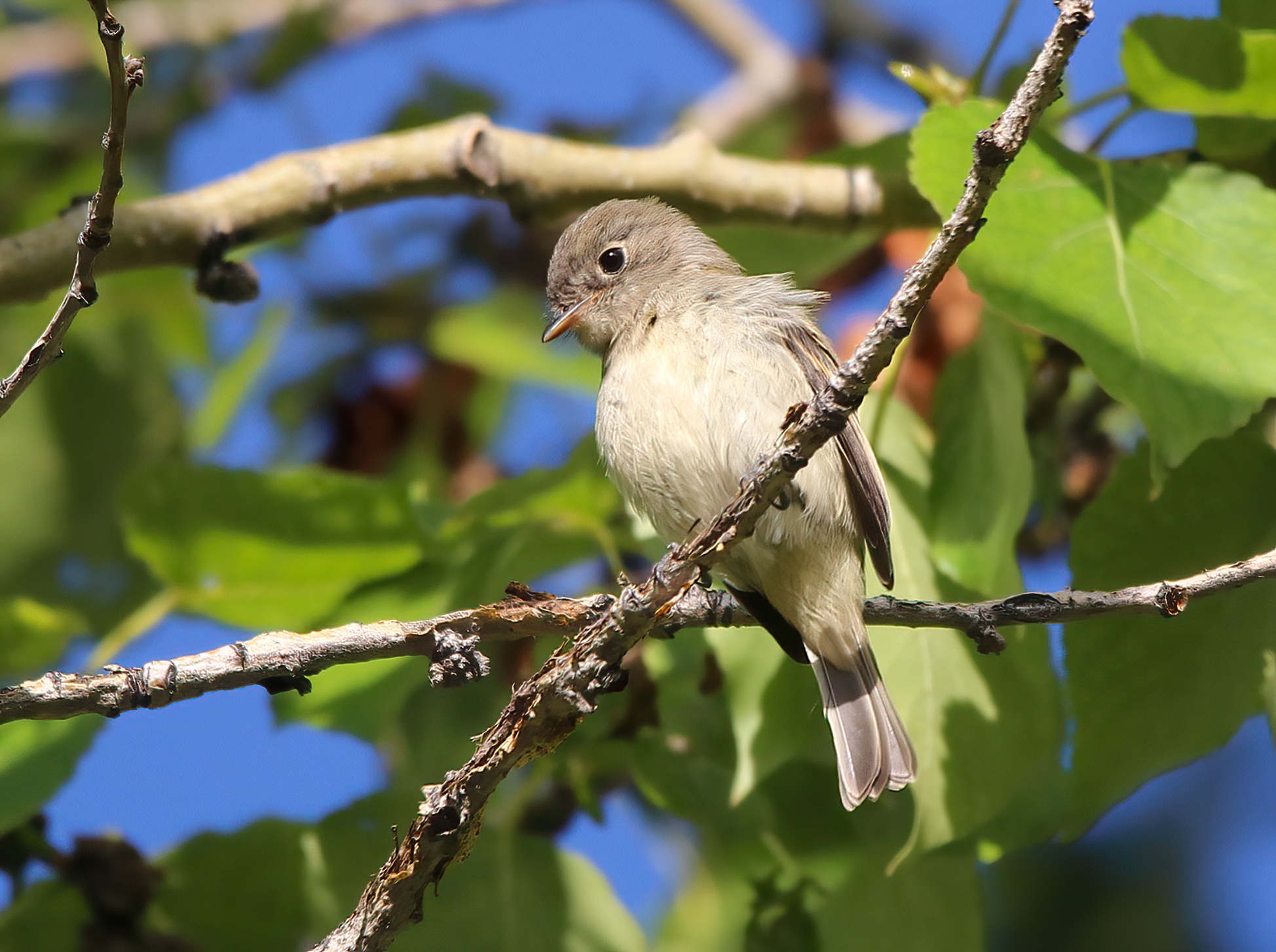While lightly scratching a mosquito bite on my forearm, I must admit I rejoiced in seeing swarms of insects on a few recent birding trips. Walking through clouds of midges, inhaling a few, quickly followed with a cough to expel them sounds uncomfortable. However, having tied flies for trout fishing decades ago, reading entomology books and exploring stomach contents of the odd trout, I must admit to having an affection for these tiny creatures. Held high in esteem by me is the dragonfly, a most magnificent role player in the grand scheme of life cycles. Over the years though, it seems that the number of dragonflies has notably declined. What is happening to the insects and why might a bird watcher care?
As the fledglings of many local bird species grow rapidly, their parents have been busy gathering delicious grasshoppers, caterpillars as well as flying insects to aid in that growth. In North America, 96% of our adult terrestrial birds feed insects to their offspring in part or entirely in their initial weeks of life Caterpillars are especially important in feeding the young. Tennessee warbler young consume 90% of their diet in the form of caterpillars. A pair of chickadees can eat up to 15,000 caterpillars during breeding season. On a global scale birds eat between 400 and 500 million tons of insects annually. Aerial insectivores, such as all of our swallow family, the flycatchers as well as common nighthawks rely exclusively in flying insects to sustain life. Insects are truly the foundation of life for birds in North America and beyond. Essentially, birds play a crucial role in maintaining an ecological balance of sorts by controlling insect populations.
Canada has experienced a 43 percent in its aerial insectivores since the 1970s. Relying totally on insects for sustenance, the loss of these insectivores indicates losses in insect life across the country. Across the Atlantic, the relationship between insect loss and declining bird populations is startling. Estimates indicate that Europe has a loss of 550 million birds over the last 40 years, while also seeing a decline of 75 percent or more of their insect population. Richard Gregory, a professor at University College in London, who worked with French researchers, analyzed how 170 bird species responded to human induced pressures, by collecting data from 20,000 monitoring sites located in 28 countries over a period of 37 years.
Of the four major sources of human impacts, the agricultural use of pesticides and fertilizers, climate change, changes in forest cover and urbanization, modern farming practices were found to be the biggest cause of bird populations declines in Europe. As pesticide, herbicides and fertilizer use increased after WWII, mainly to increase food yield per acre, the impacts on the natural world became evident over time. Pesticides killed insect life. The herbicides and fertilizers, along with the crop seed, limit the vegetation diversity to a single crop, which may not provide any benefits to both birds and the insects.
Although the European bird declines are steep, North Americans as well need to address the challenges of ensuring the survival of bird populations, the very populations that can consume some of the “pests” that are of concern. What can we do?
I’d Hate To Bug You, But ….. (Part One)

In response to Canada's Online News Act and Meta (Facebook and Instagram) removing access to Canada's local news from their platforms, Anchor Media Inc encourages you to get your news directly from your trusted source by bookmarking this site and downloading the Rogue Radio App. Send your news tips, story ideas, pictures, and videos to info@anchormedia.ca.




